Lesser known than coral reefs, marine seagrass ecosystems are rich in biodiversity and are powerhouses when it comes to sequestering carbon dioxide. Yet, much remains unknown about the ecology of seagrass beds, including detailed information on how seagrass spread their seeds and colonize new area. Now a recent study in Marine Ecology Progress Series documents that several species of marine animal are key to dispersing seagrass, overturning the assumption that seagrass was largely dispersed by abiotic methods (such as wind and waves).
“Traditional thinking is that eelgrass disperses by abiotic mechanisms such as floating seeds, floating reproductive shoots, or currents pushing seeds along the seafloor,” explains lead author Sarah Sumoski with the Virginia Institute of Marine Science. “Our study shows that eelgrass seeds can also be dispersed through consumption and excretion by fish, terrapins, and birds—providing a means to bring seeds to isolated areas.”
The researchers studied eelgrass (Zostera marina), a type of seagrass, in the Chesapeake Bay in the eastern U.S. Feeding nearly two thousand eelgrass seeds to five species—including three fish, one turtle, and one seabird—the researchers found that the seeds survived the passage through the animal’s guts and germinated successfully. But survival isn’t the only important thing to a plant: distance also matters. If a plant species is to colonize new areas it will need to ensure its seeds can go far.
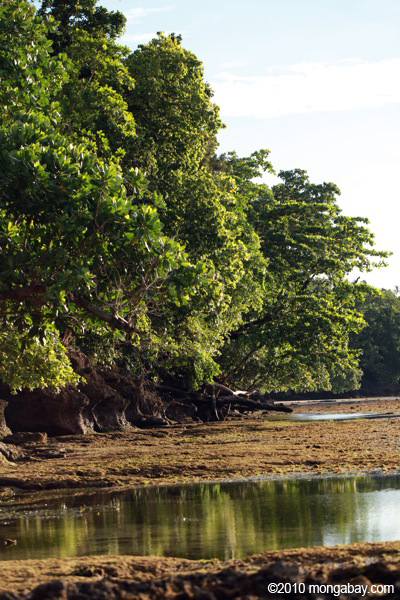 Mangroves and seagrass, two hugely important marine ecosystems, in Indonesia. Photo by: Rhett A. Butler. |
“We estimate that the fishes could disperse eelgrass seeds 10s to 100s of meters, while the maximum dispersal distance for terrapins is around 1,500 meters, or about a mile. The scaup [seabird] was the champ, with a maximum dispersal distance of more than 10 miles,” explains Sumoski.
While dispersal by winds and currents are also likely important, Sumoksi says that seagrass seeds dispersed by animals may have a better chance for survival.
“[Animals] prefer to live under the conditions that favor seagrass growth and thus will tend to carry seeds to areas where they’ll germinate. Wind and currents can easily disperse seeds into areas unsuitable for seagrass growth.”
A study last year found that the world’s seagrass beds stored around 20 million metric tons of carbon, even though the ecosystems covered just 0.2 percent of the Earth. Compared to forests, seagrass ecosystems were capable of storing more than twice as much carbon per square kilometer. Yet these ecosystems are hugely imperiled by dredging, coastal development, and poor water quality. Already nearly a third of the world’s seagrass ecosystems have been lost, though restoration is possible in many cases.
CITATION: James W. Fourqurean, Carlos M. Duarte, Hilary Kennedy, Núria Marbà, Marianne Holmer, Miguel Angel Mateo, Eugenia T. Apostolaki, Gary A. Kendrick, Dorte Krause-Jensen, Karen J. McGlathery & Oscar Serrano. Seagrass ecosystems as a globally significant carbon stock. Nature Geoscience. 2012. doi:10.1038/ngeo1477.
Sarah E. Sumoski, Robert J. Orth. Biotic dispersal in eelgrass Zostera marina. Marine Ecology Progress. Vol. 471: 1–10, 2012. doi: 10.3354/meps10145.
Related articles
Mangrove deforestation 3x worse for climate than rainforest loss
(09/07/2012) Degradation and destruction of the world’s seagrasses, tidal marshes, and mangroves may generate up to a billion tons in carbon dioxide emissions annually, reports a new study.
Seagrass beds store 20 billion tons of carbon
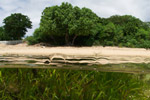
(05/22/2012) Just below the ocean’s surface lies a carbon powerhouse: seagrass meadows. New research in Nature Geoscience estimates that the world’s seagrass meadows conservatively store 19.9 billion metric tons of carbon, even though the threatened marine ecosystems make up only 0.2 percent of Earth’s surface. The findings lend support to the idea that seagrass protection and restoration could play a major role in mitigating climate change.
Sharks and rays win protections at CITES

(03/11/2013) Today, for the first time, sharks and rays have won the vote for better protection under CITES (the Convention on International Trade in Endangered Species), the world’s regulating body on trade in threatened species. Five shark species and manta rays, which includes two species, have received enough votes to be listed under Appendix II of CITES, which means tougher regulations, but not an outright ban. However, the votes could still be overturned before the end of the meeting.
Has shark fin consumption peaked at 100M dead sharks per year?
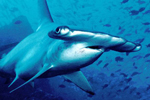
(03/05/2013) While a new study warns that up to 100M sharks are killed annually, there are signs out of China that demand for shark fin may be on the decline. A study published last week in the journal Marine Policy estimated shark deaths at 100 million in 2000 and 97 million in 2010, suggesting a slight drop in shark killing. Meanwhile reports out of China in recent months suggest an accelerating decline in shark fin consumption. China is the top market for shark fin, which is consumed as a status symbol, typically at wedding ceremonies and business dinners.
Leatherback sea turtles suffer 78 percent decline at critical nesting sites in Pacific
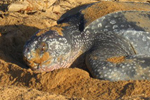
(02/27/2013) The world’s largest sea turtle, the leatherback (Dermochelys coriacea), is vanishing from its most important nesting sites in the western Pacific, according to a new study in Ecosphere. Scientists found that leatherback turtle nests have dropped by 78 percent in less than 30 years in the Bird’s Head Peninsula on the island of New Guinea. Worryingly, these beaches account for three-fourths of the western Pacific’s distinct leatherback population; globally the leatherback is listed as Critically Endangered by the IUCN Red List, the highest rating before extinction.
From the brink of extinction: elephant seals stage remarkable comeback

(01/23/2013) In the 19th century the Northern Pacific Elephant was thought to be extinct until a small population was discovered on an island of Baja California in 1892. Since then, the species has staged a remarkable comeback which was greatly accelerated by protective measures adopted by the U.S. and Mexican governments. The recovery is especially evident on the beaches of California’s Año Nuevo State Park. Until the 1950s so individuals were observed in the park. In the 1960s pups started to be born on Año Nuevo’s sandy shores. By the 1990s thousands of pups where born each year, capping the elephant seal’s turnaround. ‘Beachmaster’, a new film by Christopher Gervais and Stan Minasian, tells the conservation success story of their recovery.
Telling the story of the father of sea turtle conservation
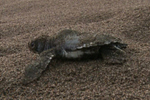
(01/21/2013) In 1959, visionary Archer Carr founded the world’s first conservation group devoted solely to sea turtles. Working with these marine denizens in Costa Rica, Carr was not only instrumental in changing local views of the turtles—which at the time were being hunted and eaten at unsustainable rates—but also in establishing basic practices for sea turtle conservation today. Now a new film by Two-Head Video, Inc. tells the story of Carr’s work and the perils still facing marine turtles today.
Saving manta rays from the fin trade

(01/15/2013) Tens of millions of sharks and rays are killed each year to meet demand for shark fin, a delicacy across East Asia. But while the plight of sharks has gained prominence in international environmental circles in recent years, the decline in rays has received considerably less attention. A new film, Manta Ray of Hope, aims to change that. Produced by cinematographer, scuba diver, and marine conservationist Shawn Heinrichs, Manta Ray of Hope offers a look at the mysterious and magnificent world of the world’s largest ray, the manta ray. The film highlights both the threats mantas face as well as some of the people who are working to save them.
Obama triples area of protected California coastline
(12/20/2012) Today President Obama announced the government would add almost 3,000 square miles of California coastline to the National Marine Sanctuary system, roughly tripling its size, reports the Sierra Club.